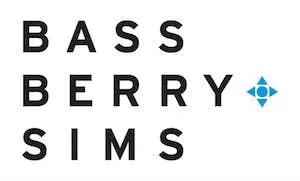Nearly 25 years ago, the Office of Inspector General (OIG) for the U.S. Department of Health and Human Services (HHS) created a regulatory safe harbor to the federal Anti-Kickback Statute (AKS) for physician investment in ambulatory surgical centers (ASCs). Although the requirements of the safe harbor vary depending on the investors and the nature of the ASC's operations, the ASC safe harbor requires in all cases that physician-investors derive at least one-third of their medical practice income from ASC-covered "procedures" (i.e., procedures listed on the Centers for Medicare & Medicaid Services ASC Covered Procedures List). Not only is this so-called "one-third income test" a condition of the safe harbor, OIG has warned that having physician-investors who do not satisfy this test can pose significant risk under the AKS.
OIG recently provided additional guidance for these situations. When a physician-investor in a single-specialty ASC does not satisfy the one-third income test, OIG explained that it assesses the risk by asking three questions:
- Will the physician refer patients to the ASC for procedures performed by others?
- Will the physician actually perform procedures in the ASC?
- Why does the physician fail the one-third income test?
Although non-binding guidance offered through OIG's revamped frequently asked questions (FAQs) process (which we covered in a separate alert, OIG Offers Stakeholders a New Avenue for Informal Fraud and Abuse Guidance), these questions provide a roadmap for assessing and mitigating AKS risk where physician-investors do not meet the one-third income test.
Background: ASCs and the Anti-Kickback Statute
OIG treats physician-owned ASCs differently than other physician-owned entities for two reasons. First, as a matter of policy, HHS has promoted ASCs as lower-cost sites of service. Procedures performed in an ASC are less costly than they would be if performed in a hospital. Second, physicians often use ASCs as an extension of their office practices rather than a means to profit from procedures performed by others. When physicians perform a significant number of procedures in an ASC, OIG has recognized that there are "obvious and legitimate business and professional reasons" for physician ownership in the ASC, including "professional autonomy, accountability, and quality control."
The key risk in OIG's view is not that physician-investors may receive profit distributions from the facility fee whenever they perform procedures. Instead, it is that they will use the ASC as a vehicle to profit off passive referrals, earning a portion of the facility fee by referring patients to other physicians who perform the procedures. Two examples illustrate this risk:
- Physicians who do not perform procedures at the ASC-primary care physicians, for instance-may be offered investment interests in exchange for referring patients to the ASC, allowing them to profit from their passive referrals.
- Physicians in specialties that refer to one another-say, orthopedists and pain management physicians-may jointly invest in an ASC to generate cross-specialty referrals.
The ASC safe harbor aims to minimize this risk by requiring physician-investors to derive one-third of their medical practice income from ASC-covered procedures and, if a multi-specialty ASC, also requiring physician-investors to perform one-third of their ASC procedures at the ASC in which they hold an ownership interest.
For single-specialty ASCs, the one-third income test does not require physician-investors to actually use the ASC. The fact that they share the same specialty as those who do use the ASC, in OIG's view, mitigates the risk that physician-investors will use the ASC to generate facility fees for procedures performed by others. Rather than referring procedures to competing physicians, the theory goes, they will perform the procedures and earn the professional fees themselves.
For multi-specialty ASCs, there is the added risk of cross-specialty referrals. Accordingly, physician-investors must also satisfy a second test-the so-called "one-third procedures test"-to meet the safe harbor. This second one-third test requires physician-investors to perform at least one-third of their ASC procedures at the ASC they own. Coupled with the one-third income test, the one-third procedures test ensures that the physician-investors are proceduralists who regularly use the ASC as an extension of their practice.
Meeting the safe harbor is not required, and many ASC arrangements that fall outside the safe harbor still pose little risk under the AKS (e.g., those with management company ownership). But failure to satisfy the one-third income test-or, in the case of a multi-specialty ASC, either one-third test-can significantly increase risk because these conditions go to the heart of OIG's concern with physician ownership in ASCs.
Guidance: Assessing Risk When Physicians Do Not Satisfy the One-Third Income Test
The principle behind the one-third income test, OIG explains in the FAQ, is that physicians who meet this standard are more likely to use the ASC as an extension of their office practices. This, in turn, reduces the risk that the physician's investment inappropriately rewards referrals for ASC procedures that the physician does not personally perform.
When a physician-investor fails to satisfy the one-third income test, the AKS risk is based on the totality of the facts and circumstances. To assess this risk, OIG explains in the FAQ, it considers the following factors:
- Will the physician refer patients to the ASC for procedures performed by others?
- Will the physician perform their own procedures in the ASC?
- What circumstances cause the physician to fail the one-third income test (e.g., performing a high volume of inpatient procedures)?
At bottom, these questions gauge whether the physician-investor generates facility fees by referring patients for procedures performed by others, rather than using the ASC as an extension of their office practice. They are also a helpful distillation of OIG's prior guidance.
Take, for example, Advisory Opinion 08-08. There, OIG issued a favorable advisory opinion for an orthopedist-owned ASC, where a quarter of the physician-investors would not satisfy the one-third income test. The reason they would not, though, was that they routinely perform inpatient surgical procedures, deriving at least one-third of their medical practice income from procedures performed in an inpatient setting. Although they would be in a position to refer pain management procedures to be performed at the ASC, the requesting party certified that these physicians would personally perform any pain management procedures they refer to the ASC. Ultimately, this gave OIG comfort that the ASC investment was not a means to profit from referrals for procedures performed by others.
Advisory Opinions 03-02 and 21-02 follow similar reasoning. In both, some physician-investors would not satisfy the one-third income test. They would, however, derive one-third of their medical practice income from procedures that were either ASC procedures or require a hospital operating room, meaning they were proceduralists who regularly perform procedures requiring at least an ASC level of care.
These two advisory opinions-one involving a single-specialty ASC and the other a multi-specialty ASC-illustrate the different risk profiles of single- and multi-specialty ASCs. For the single-specialty ASC in Advisory Opinion 03-02, it was enough for the non-qualifying physicians to be of the same specialty and themselves be proceduralists. In OIG's view, this made it more likely that they would use the ASC for procedures rather than passive referrals. For the multi-specialty ASC in Advisory Opinion 21-02, OIG relied on two additional favorable facts: The non-qualifying physician-investors would, in fact, regularly perform procedures in the ASC, and procedures from cross-specialty referrals would be exceedingly rare, representing less than 1% of the procedures performed at the ASC. These two facts minimized the risk that the ASC investment would be used as a vehicle to profit from referrals of procedures performed by others.
Takeaways
OIG's recent FAQ provides a useful framework for assessing risk under the AKS when the one-third income test is not met. Although geared toward single-specialty ASCs, the same framework can be used to analyze risk for any ASC with physician ownership. Sure, the risk profile differs for multi-specialty ASCs, and it is more important that non-qualifying physicians actually use the ASC. But the core analysis remains the same: Are physician-investors profiting off passive referrals? Why do they fail the test (or tests)? And are they using the ASC as an extension of their practice? These questions also help identify safeguards to mitigate the risk, such as those cited in Advisory Opinions 08-08 and 21-02.
Ultimately, the AKS risk is a function of the degree to which physician-investors are likely to profit from passive referrals, weighed against whether they are proceduralists and, if a multi-specialty ASC, how often they actually use the ASC. If the physician-investors are proceduralists who are unlikely to make passive referrals-because they are unlikely to refer to competing physicians within their specialty and, if a multi-specialty ASC, they rarely make cross-specialty referrals-the risk may be fairly low. On the other hand, if they regularly profit from passive referrals, the risk may be substantial. While each arrangement turns on its facts, OIG's guidance helps draw out the facts that shape the analysis.
The content of this article is intended to provide a general guide to the subject matter. Specialist advice should be sought about your specific circumstances.



